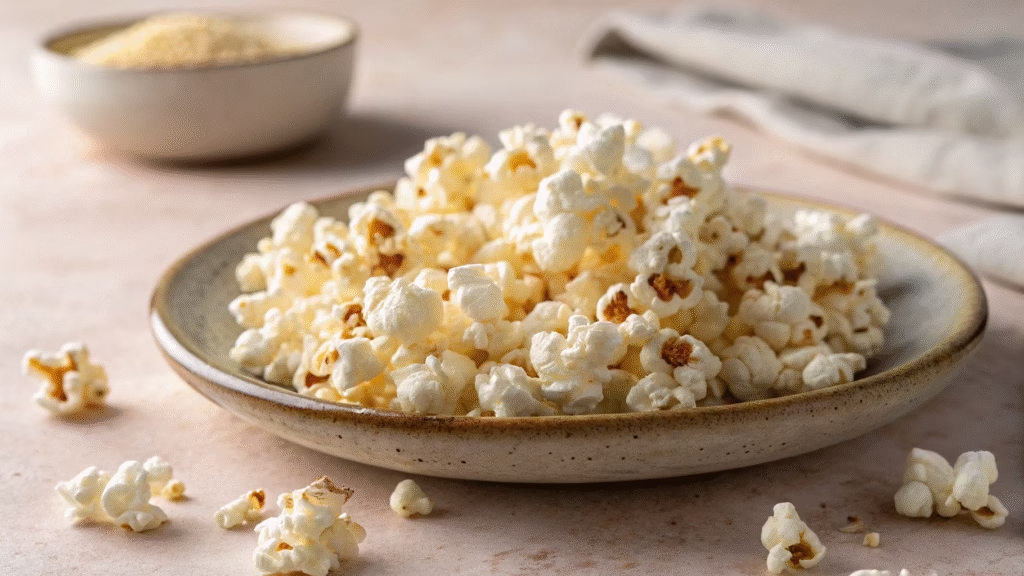
History and Science of Popcorn…
Popcorn is one of the most loved snacks in the world. Its crunch, buttery aroma, and comforting warmth make it almost impossible to resist. But popcorn isn’t just a tasty treat — it’s a symbol of entertainment, joy, and togetherness.
From the fields of ancient civilizations to the modern movie theaters we visit today, popcorn has traveled a long way. How did this humble kernel become the ultimate movie snack and even help theaters boost their revenue? Let’s dive into the fascinating story of popcorn — from its scientific secrets to its cultural takeover.
Want to see all of this in amazing 3D visuals? Watch our video on YouTube Channel for a fully animated explanation (Available in English & Malayalam)
The Ancient Origins of Popcorn
🔸 A 9,000-Year-Old Snack
The story of popcorn begins around 9,000 years ago in what is now southern Mexico. Indigenous farmers there cultivated a wild grass called teosinte, which is the ancestor of modern corn. These early farmers discovered something magical: when the seeds of teosinte were heated, they didn’t just burn — they popped into soft, edible puffs.
Over time, people began selecting and planting the varieties that popped best. Through careful cultivation and generations of farming, teosinte evolved into what we now call popcorn.
🔸Popcorn in Ancient Cultures
Popcorn wasn’t just food — it was part of life and tradition. Ancient tribes in Central and South America used popcorn for decoration, ceremonies, and even jewelry. Archaeologists have found popcorn kernels in burial sites that are thousands of years old, perfectly preserved and still capable of popping!
In Peru, ancient remains show that people popped corn by tossing it into hot sand and then shaking off the grains. It was simple, fun, and delicious — proof that humans have always loved a good snack.
Why Popcorn Pops
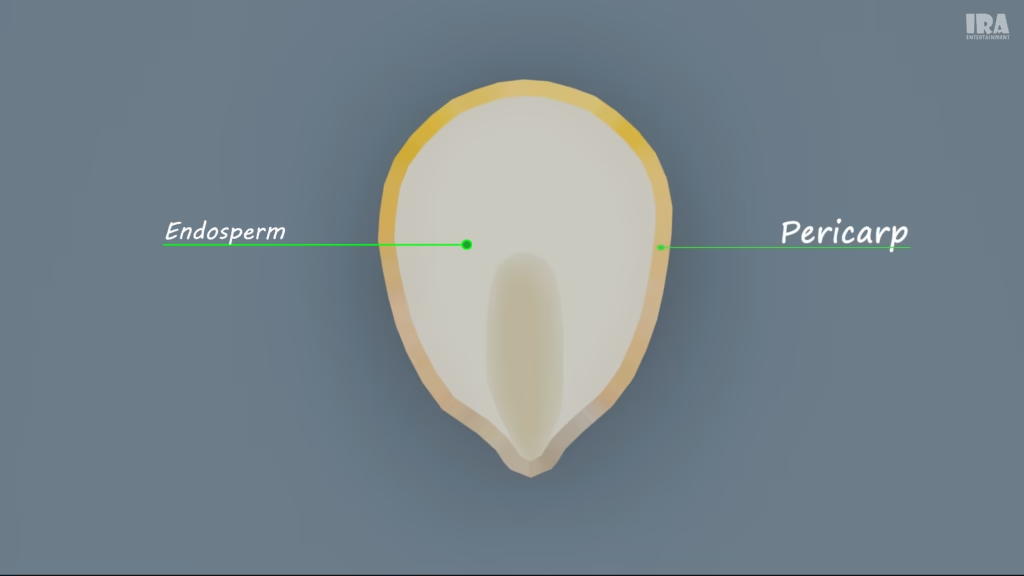
Popcorn is unique among all types of corn because of its special structure. Each kernel is like a tiny pressure cooker.
Here’s how it works:
The Hard Shell (Pericarp): The outer layer of a popcorn kernel is very tough and water-resistant. It keeps everything sealed inside.
The Inner Core (Endosperm): Inside is a mix of starch, water, and oil.
The Heat Effect: When you heat the kernel, the water inside turns into steam.
The Pressure Builds: The tough shell traps the steam, increasing pressure inside the kernel.
The Burst: When pressure reaches about 135 psi, the kernel explodes. The starch inside puffs up instantly and cools into the white, fluffy popcorn we eat.
That’s why popcorn can expand up to 40 times its original size — quite an impressive transformation for such a tiny grain!
Types of Popcorn
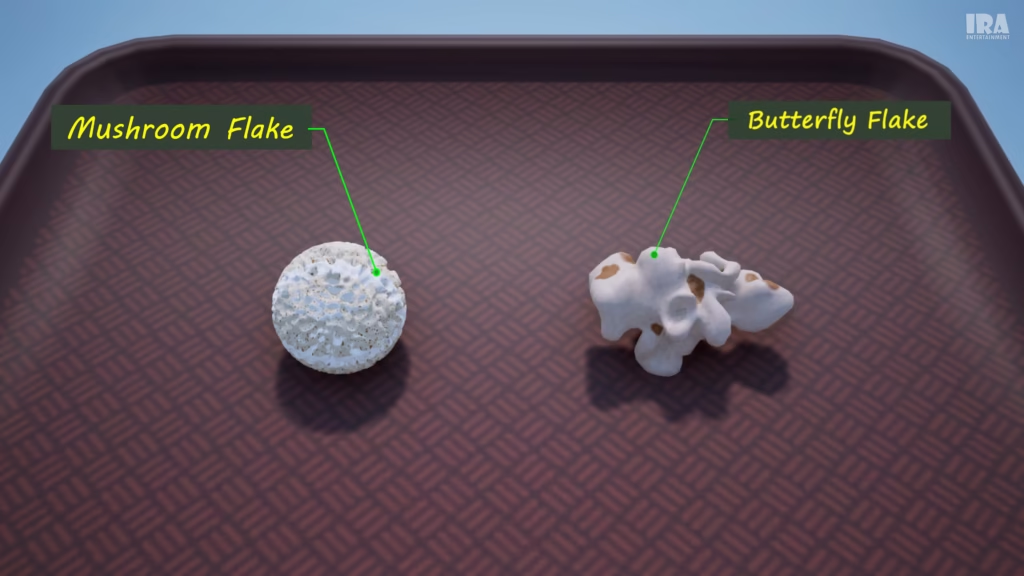
There are two main shapes of popcorn you’ll find:
Mushroom Flake: Round and compact, perfect for coatings like caramel or cheese.
Butterfly Flake: Irregular and fluffy, ideal for butter and salt — this is the classic movie-theater popcorn shape.
Get Your Popcorn Essentials Here
Oil-Free Electric Popcorn Maker (Affiliate link)
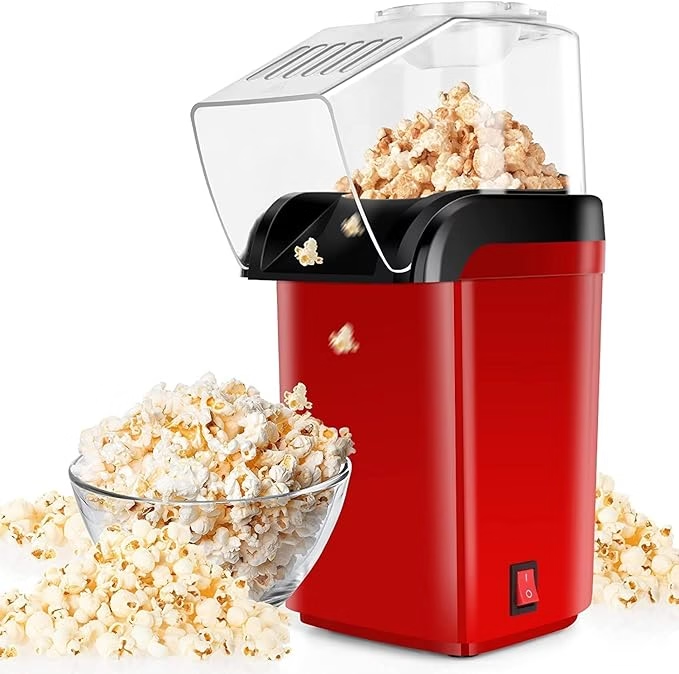
Popcorn in Early America
🔸Native American Influence
Long before Europeans arrived in the Americas, indigenous tribes had already been growing and enjoying popcorn. They used it not only as food but also for storytelling and trade. Popcorn was often used in tribal feasts, and some tribes even believed that spirits lived inside each kernel, escaping when the corn popped!
🔸Popcorn Reaches European Settlers
When European colonists arrived in the late 1400s, they encountered popcorn for the first time. They found it fun, cheap, and easy to make. Early settlers popped corn in open fires or on stove tops using pans with holes to let out steam.
By the 19th century, popcorn had become a popular American snack — sold at fairs, circuses, and carnivals. It was inexpensive, filling, and could be made almost anywhere.
The Popcorn Machine Revolution
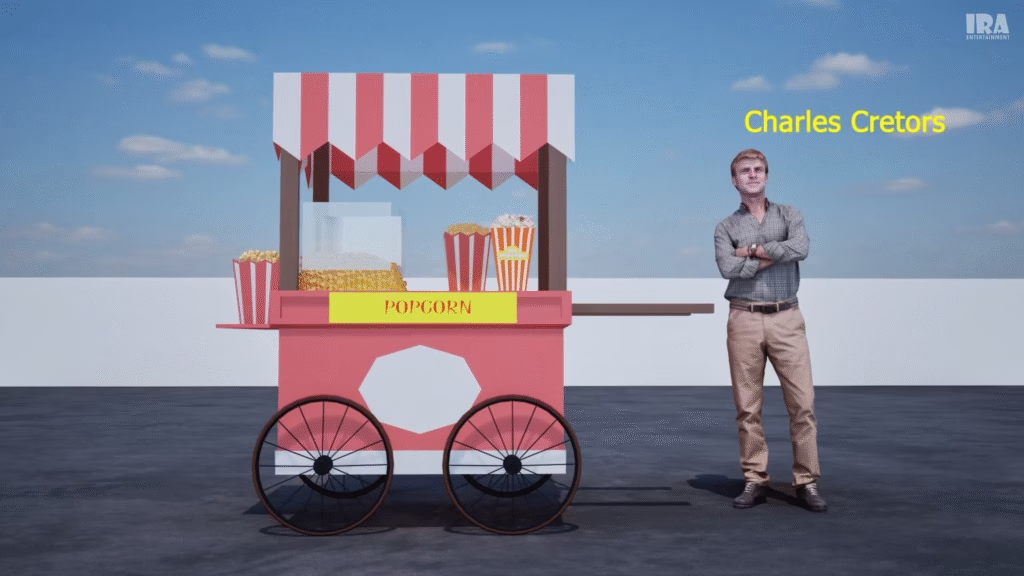
A major turning point came in 1893 at the World’s Columbian Exposition in Chicago, where Charles Cretors introduced a revolutionary steam-powered popcorn machine.
This invention allowed vendors to pop and season popcorn on the spot, creating a mouthwatering aroma that drew in crowds. The machine’s design made popcorn easier to produce in large quantities and maintain its freshness and flavor.
Soon, popcorn carts were seen on every street corner in America. Vendors made steady profits by selling popcorn in paper bags for just a few cents. It became known as the “people’s snack” — affordable, portable, and delicious.
The Great Depression and the Entry of Popcorn in Theaters
🔸Tough Times, Cheap Snacks
The Great Depression of the 1930s changed everything. As the economy collapsed, Americans had little money to spare. Yet people still wanted entertainment — a small escape from daily struggles.
Movies became that escape. For just a few cents, anyone could sit in a dark theater and forget their worries for an hour or two. But a movie experience felt incomplete without something to munch on. Popcorn, being cheap and satisfying, became the perfect companion.
🔸The Resistance from Theater Owners
At first, movie theater owners resisted selling popcorn. They wanted to keep cinemas elegant, like opera houses, and feared popcorn would make a mess. Many theaters even banned food inside. But as audiences grew larger and more diverse, theater owners had to adapt.
People brought their own popcorn from outside vendors. Soon, theater owners realized they were missing out on a golden opportunity — quite literally. They decided to start selling popcorn themselves, and it turned out to be the smartest business decision they ever made.
How Popcorn Increased Theater Revenue
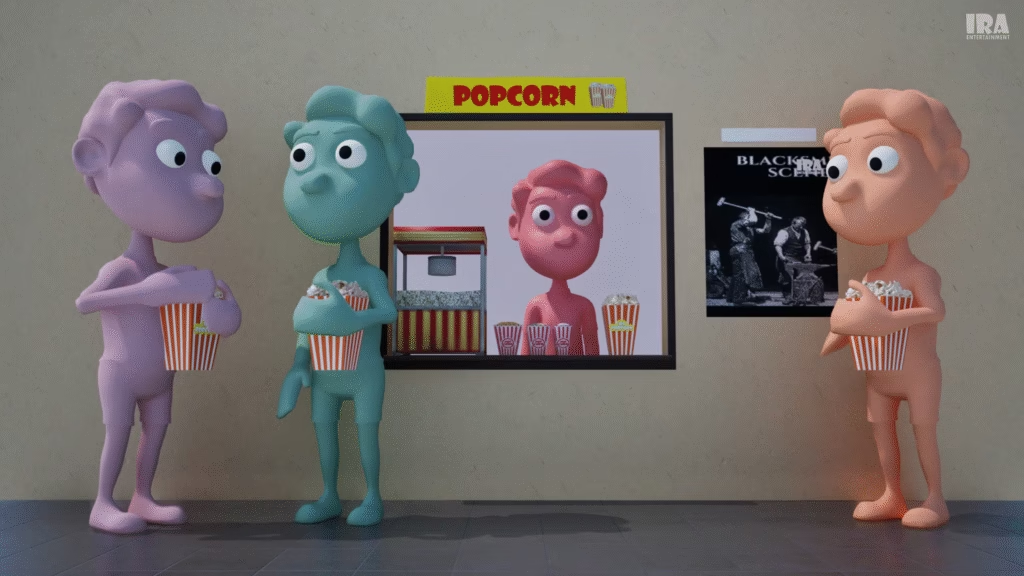
🔸The Business of Butter
When theaters started selling popcorn directly, profits skyrocketed. Popcorn was incredibly cheap to buy in bulk, but theaters could sell it at a markup of up to 1,000%. For every dollar spent on popcorn, theaters made several dollars in return.
This was a game-changer. Even when ticket sales were slow, popcorn sales kept theaters alive. Soon, popcorn wasn’t just a snack — it was a financial lifeline.
🔸Concessions: The Secret Revenue Stream
Movie tickets generate most of a theater’s attendance but not most of its profits. That’s because studios and distributors take a large share of ticket revenue. But theaters keep 100% of their concession sales, including popcorn, drinks, and candy.
Today, popcorn and other snacks make up 30–40% of total theater profits. The average cost of a small popcorn might be just a few cents to produce, yet it sells for several dollars — that’s pure profit!
🔸Popcorn and the Power of Smell
The irresistible aroma of popcorn is not an accident. The smell alone can trigger cravings and attract customers from the moment they walk in. That’s why popcorn machines are often placed near theater entrances — the scent acts like free advertising.
No matter how full someone is, it’s almost impossible to resist that buttery fragrance floating through the lobby.
Popcorn During World War II
During World War II, sugar was rationed in the United States. That meant candy, soda, and sweet snacks were harder to produce and buy. But popcorn wasn’t rationed, making it one of the few affordable treats left.
People turned to popcorn for comfort. In those years, Americans ate three times more popcorn than before. The trend continued even after the war ended, solidifying popcorn’s place as the nation’s favorite movie snack.
The Popcorn Boom in the 1950s
The 1950s brought a new golden age for popcorn. Movie theaters were booming, television was on the rise, and people loved gathering for entertainment. Theater chains started adding modern concession stands that sold popcorn, candy, and soft drinks together.
In 1957, the famous animated ad “Let’s All Go to the Lobby” appeared on screens across America, encouraging audiences to grab snacks during intermission. The catchy tune and dancing popcorn bucket became a symbol of movie culture.
From that point on, popcorn was no longer just a treat — it was part of the movie experience itself.
Popcorn at Home
In the late 1970s and 1980s, popcorn experienced another transformation — it came home.
The invention of microwave popcorn changed snacking forever. Now, anyone could enjoy hot, fresh popcorn while watching TV or a movie at home. Families embraced it for movie nights, game days, and quick snacks.
Soon, popcorn came in dozens of flavors — butter, cheese, caramel, kettle corn, spicy, and more. What used to be a theater-exclusive snack became a household favorite worldwide.
Why Popcorn Remains the King of Movie Snacks
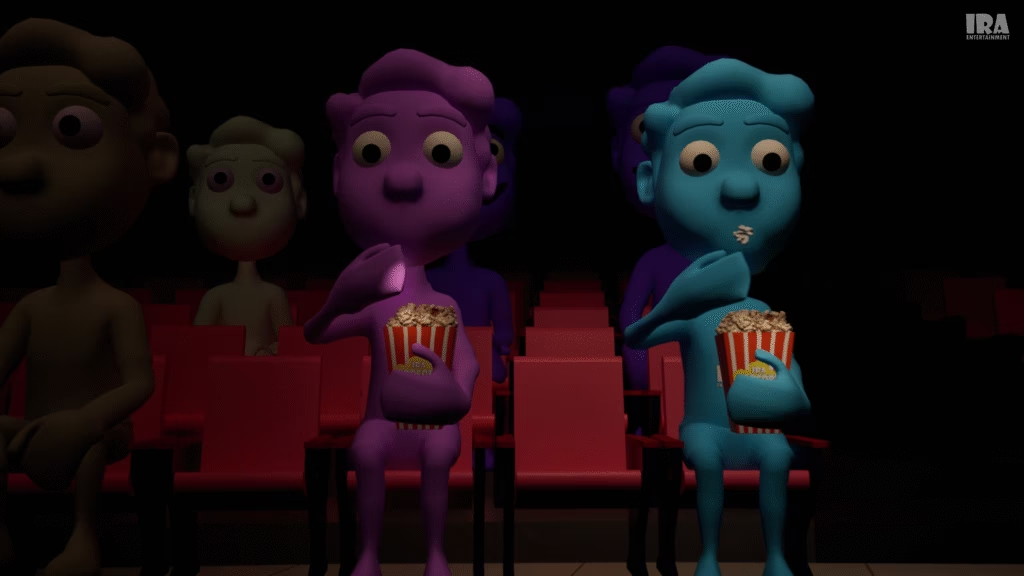
Even today, when theaters offer everything from nachos to ice cream, popcorn still holds the crown. Here’s why:
Affordable and Profitable: Popcorn costs little to make and sells for a premium price.
Aromatic Appeal: The smell of popcorn instantly creates a “movie mood.”
Easy to Prepare: Popcorn is fast to make, lightweight to store, and doesn’t spoil easily.
Psychological Connection: For generations, popcorn has been linked with fun, leisure, and film. It’s now part of our emotional experience of watching movies.
Customizable: From buttered to caramelized, flavored to spicy — popcorn adapts to every taste preference.
This unbeatable combination keeps popcorn firmly in its throne as the king of movie snacks.
Modern Movie Popcorn: Innovation and Collectibles
In recent years, movie theaters have found new ways to make popcorn even more exciting. They’ve introduced:
Gourmet Popcorn: Unique flavors like truffle, chocolate drizzle, or chili lime.
Refillable Buckets: Many theaters offer large, refillable buckets as loyalty rewards.
Limited Edition Buckets: For major movie releases, special themed containers (like superhero or Disney designs) attract collectors.
Take-Home Popcorn: Some theaters now sell branded popcorn bags in supermarkets or through delivery services.
These innovations not only keep popcorn relevant but also turn it into a marketing tool and revenue booster.
Popcorn and Theater Economics Today
Even in today’s age of streaming and digital entertainment, popcorn remains vital for theaters.
Most theaters make more profit from concessions than from tickets. This is why popcorn prices are high — theaters rely on those sales to stay in business. When you buy that large tub of buttery popcorn, you’re not just treating yourself; you’re helping the theater keep the lights on.
Popcorn is, quite literally, what keeps cinemas popping!
Popcorn Fun Facts
Popcorn is the official state snack of Illinois.
The average American eats about 45 quarts of popcorn per year.
The largest popcorn ball ever made weighed over 9,000 pounds!
Popcorn is naturally gluten-free and low in calories — until you drown it in butter, of course.
Native Americans sometimes used popcorn to decorate ceremonial headdresses and clothing.
The Cultural Meaning of Popcorn
Popcorn has transcended being just a snack — it’s now a cultural icon. It represents shared joy, community, and entertainment. Whether it’s a first date, a family outing, or a solo night at the movies, popcorn is always part of the memory.
There’s something special about that crunch as the lights dim, the previews start, and the story unfolds on screen. Popcorn connects us — past and present, young and old — in the universal language of movies.
From Kernel to King
From ancient farmers in Mexico to modern multiplexes, popcorn has traveled an incredible journey. It survived social barriers, economic crises, and even world wars to become the star of every theater lobby.
Popcorn isn’t just food — it’s a story of innovation, survival, and timeless appeal. It’s proof that even the simplest things can make the biggest impact.
So next time you’re sitting in a dark theater, hearing the soft crunch of popcorn around you, remember — you’re not just eating a snack. You’re part of a tradition that’s been popping for thousands of years.
Watch in Malayalam!

Love what I do?
Consider supporting my work by👉 buying me a coffee
Check out our related products and other links 👉 Products & other platforms
Want to learn more through visual storytelling? Check out our detailed 3D explanation blog on How Did Ancient People Collect Water Without Electricity or Pipes?
Useful Link : POPCORN